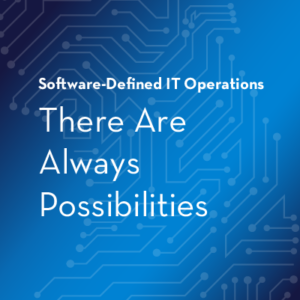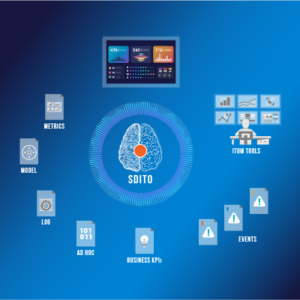
Dealing with the deluge
Data streams from all parts of the IT environment are gushing TBs of machine-generated data from the infrastructure (on premises, virtual, cloud, etc.) alongside gobs of data from hundreds of tools designed to help manage one or more areas. Specificities and nuances in the data are the norm, and significant differences in data acquisition range in terms of security postures, flow rates, and the structured/unstructured nature of the data itself — all of which have historically prevented a single assimilation approach to handle the onslaught. While each data stream provides unique value, no single data stream provides the full context necessary to manage the entire IT operations set, and this is a key concept to grasp in the crowded and confusing world of ITOM tools. For example, no amount of AI on top of log data will provide a holistic model of the infrastructure, while learnings from various event sources won’t provide a realistic capacity gauge for metrics. In short, the collective is required to simply manage the operations, and it’s futile to resist the notion that trustworthy automation can occur without this complete context.
Going where no one has gone before
With warp drives and teleportation still a part of the distant future, software-defined IT operations (SDITO) is an effort to acknowledge the current complexity while offering an evolving solution for the future. Handling this aggregated data requires the ability to accept data both pulled (collected/polled) and pushed (received/ad hoc), which means the debates about agents versus agentless are back. Model, metrics, log and ad hoc data streams vary widely in their structure, which means the underlying storage mechanism must be extremely malleable such that retrieval does not become cumbersome. However, SDITO is more than an aggregation mechanism; it provides intelligence across all the data streams, allowing holistic interpretation to drive evolved automation. To be relevant, the intelligence must be applied in real-time, which means streaming analytics must be applied to sift out anomalies, detect patterns across contexts, etc. Accomplishing this feat requires the scale only afforded via the cloud, where machine learning can leverage elastic storage, network and compute.
In the IT landscape, insufficient facts lead to dangerous outcomes, and Zenoss aims to prevent blind spots and provide understandings of the enterprise environment where human operators often struggle. To learn more about how Zenoss admirably accomplishes these mind-bending capabilities along with other industry experts and IT operations professionals, please join us at GalaxZ18.








